The Moon Landing: 50 Years Later
This week, we celebrate 50 years since man first walked on the Moon! How did we get there, what happened on the Moon, and will we ever go back? From launch to landing, and more; Izzie Clarke and Adam Murphy speak to those that worked on, and were inspired, by Apollo 11.
In this episode
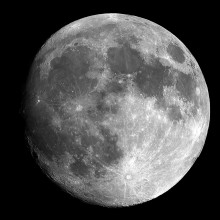
01:04 - Why go to the moon?
Why go to the moon?
with Rebecca Charbonneau, Department of History and Philosophy of Science at the University of Cambridge
On 12th September 1962, President John F Kennedy spoke at Rice University in Houston, Texas, committing to the biggest scientific challenge humans had ever seen. That in the next decade, America would land astronauts on the moon. He set the task; “before this decade is out, of landing a man on the Moon and returning him safely to the Earth.” But WHY was there this giant push to shoot for the moon? And were America really at the forefront for this “race”? Adam Murphy spoke to Rebecca Charbonneau from the Department of History and Philosophy of Science at the University of Cambridge...
Rebecca - The reason the moon shot really got on the table was in part due to a speech that President Kennedy gave in 1962. Believe it or not the public support from the United States in regards to a moon shot was not as enthusiastic as you might have expected. And so Kennedy really needed to rally the American public and support behind a moon shot. And the reason they wanted to do a moon shot in the first place was largely for political reasons. In 1962 Kennedy was suffering massive political embarrassment in regards to the Bay of Pigs invasion, which had happened the prior year, and of course there was the escalating tension between the Soviet Union and the United States in regards to technical prowess and success in space. The Soviet Union had been massively successful, while the United States had suffered public failure after public failure. In fact, Kennedy, when he was giving his speech at Rice University, said something along the lines of “we have had our failures but so have others, even if they do not admit them, and they may be less public”. So there was also this suspicion about the Soviet Union. How were they so successful, and yet the United States kept failing?
Adam - And things were not going well for the Americans. At this point, the Soviets were leaving the Americans in their dust.
Rebecca - The Soviets had not only gotten the first satellite in space, Sputnik, they had also gotten the second satellite in space. The first animal in space - Laika the dog. The first man in space and orbit - that's Yuri Gagarin. The first woman in space - Valentina Tereshkova. The first lunar flyby, with Lunar One. The first lunar impact. First images of the far side of the moon. First lunar soft landing. First picture from the lunar surface. First lunar orbiter. First living creatures to fly past the moon. I mean, the list goes on and on. The Soviet Union in the early 60s had just been absolutely dominating the United States in space and so Kennedy did feel pressure for the United States, to not only catch up, but overtake the Soviet Union. And he in that speech used the phrase “the race to space”. So really using that competitive rhetoric to try to mobilize the United States.
Adam - Why space though? Why not a different field for the race, like the bottom of the ocean? What was it about the moon to captured humanity's attention?
Rebecca - I think it's largely in part to World War 2. So in World War 2 obviously there was a huge technological weapons development. Mostly you know missiles and bombings. So that the Germans had developed the V2 rocket, which was kind of the precursor to the ballistic missile. And at the end of World War 2, the Soviets and Americans, who were on the same side, both were really trying hard to try to capture not only the German rocket scientists, but also the V2 rockets themselves - so that the Soviets and Americans could try to use that technology to give themselves an advantage. And of course with intercontinental ballistic missiles - ones that can deploy weapons on other continents -there needs to be orbital capability right, or the ability to go into space. It was partially because of weapons development. And that was what really pushed the United States to start getting into space - with Sputnik, when the United States realized that the Soviets were able to put machinery in orbit. It wasn't so much of “we’re jealous that you can go into space”. It was this real sense of alarm - that they are technologically ahead of us in regards to mastering these weapon techniques. So that's largely how it - space - became the territory in which the early part of the Cold War was fought.
Adam - The moon landing marked the end of the space race and America had won. Why was that the end goal? Why not further, say Mars?
Rebecca - In the Rice speech that I mentioned earlier to Rice University in 1962 - that's the famous speech that Kennedy says “we choose to go to the moon” - and so he absolutely said not only is the United States going to make the goal of going to the moon they're going to do it within this decade. So within the 60s - the 60s will be the “moon decade”. And that was accomplished right, in July of 1969, right before the decade ends they do end up on the moon. And that is usually considered the end of the space race. But of course that didn't mean that the Soviets didn't actively continue their space and lunar activities.
Adam - After this the more collaborative kind of space exploration we know of today began, as the Apollo program joined forces with the Soviet space rockets called Soyuz rockets. And began the daunting task of trying to make the rockets safely linkup in space, which is called a rendezvous.
Rebecca - A couple of years later, in 1975, was the first spaceflight to include two participating nations working together. And that was the Apollo-Soyuz test project, where a Soyuz and an Apollo spacecraft docked together in space, with a rendezvous, with a crew of five people - three Americans and two Soviets who spent two days working in orbit on experiments and conducting joint press conferences. And so some people consider the Apollo-Soyuz test project the official end of the space race because it was no longer missions that were competing with one another, but rather actively collaborating with one another. And that laid the groundwork for later collaborative space missions like the Mir Shuttle program, the International Space Station - I mean now space is a highly collaborative affair.
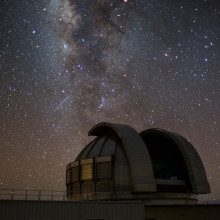
07:41 - The Men on the Moon
The Men on the Moon
with Amy Shira Teitel, Spaceflight Historian
And whilst the Apollo program was strictly a national project, there’s no doubt it was a collaborative effort. Apollo 11 was one in a series of missions that had built up to this moment of landing on the moon. Starting in 1961, both crewed and un-crewed launches went ahead to test spacecraft components, communication and more. Answering President Kennedy's challenge of landing men on the moon by 1969 required a sudden burst of technological creativity, and the largest commitment of resources, ever made by any nation in peacetime - cashing in at $24 billion at the time, which is that’s over $150 billion today. At its peak, the Apollo program employed 400,000 Americans and required the support of over 20,000 industrial firms and universities. It was all the efforts of those that made this mission possible. And at its heart, three very important astronauts; Michael Collins, Edwin “Buzz” Aldrin and Neil Armstrong. As Spaceflight historian Amy Teitel explained to Adam Murphy…
Amy - The crew of Apollo 11, as we probably know, is Neil Armstrong is the commander, Buzz Aldrin is the lunar module pilot, and Mike Collins as the command module pilot. And the three of them come across as relatively stoic individuals. And I say that I've read the mission transcript a couple of times and you do get a little bit of a sense of them kind of teasing each other a bit. But Neil Armstrong really does come across as the commander, he knows what's going on and his sense of humour seems very dry.
Buzz Aldrin’s whole thing - he did his PhD dissertation from M.I.T. in orbital mechanics and orbital rendezvous and he loved talking about it to the point where people nicknamed him Dr Rendezvous! I've read that Mike Collins said that Neil and Buzz weren't exactly friends, but that they worked very well together and had this sort of happy enough working relationship. And that's I think the strangest thing to think about, when you imagine going to the moon, you're not necessarily going to the moon with buddies, you're going to the moon with people that you work well with. And Mike Collins his memoir Carrying the Fire really kind of brings him out as the more sort of artistic soul onboard. And a very nice guy. I can say that much.
Adam - What is it that made these three men the right men for Apollo?
Amy - All three of the Apollo crew members were test pilots. That was what you had to be in the 1960s in that era to become an astronaut. Part of it was skill and part of it was things that they'd done to prove themselves. So Neil Armstrong's first flight was on Gemini 8.
Adam - The Gemini program was the forerunner to Apollo. It took two man crews into Earth orbit and had them do spacewalks or extra vehicular activities - EVAs for short. It helped prepare for the kinds of things you'd expect to deal with on the way to the moon.
Amy - He was the pilot onboard that mission and it was the first time the Gemini spacecraft docked at the Agena. And a stuck thruster on the Gemini started the whole stack tumbling in orbit to the point where he and Dave Scott nearly blacked out, and Neil Armstrong knew that capsule so well he was able to get them out of that. They used their reserve fuel for the re-entry to negate the spin. And he could do it by feel because he knew the spacecraft so well. And he got them out of that, they came home early and everyone survived and that could have been a fatality in space but he did a darn good job piloting that one.
Adam - And what about Edwin Buzz Aldrin?
Amy - Buzz Aldrin’s expertise was orbital rendezvous. And he talked about it ad nauseum apparently to all the other astronauts and their wives. His previous mission was Gemini 12. So that was the last of the Gemini program that kind of did everything that Apollo was going to do, in terms of a rendezvous, in terms of duration in space. He was very technically proficient at a lot of things. Him being the expert in rendezvous was a necessary thing for the lunar module pilot, even though the commander was the one who did the bulk of the flying.
Adam - And man number three? How did Mike Collins end up on Apollo?
Amy - Mike Collins was another Gemini veteran, his flight Gemini 10 was one of the later missions. He'd actually done two spacewalks on Gemini 10 so he was familiar enough with some of the things that we’re going to happen in space even though he wasn't the one walking on the moon. It's still a skill set that becomes valuable. So these three guys all had backgrounds in Gemini missions that gave them some familiarity that they would need on Apollo.
Adam - But even with these admittedly incredible skill sets, that didn't guarantee them the place on the moon.
Amy - But as to how they ended up on that mission, that's pure luck of the draw. So the way it typically worked was you had a prime crew and then the backup crew and then the support crew and the backup crew would backup a mission, set up for two rounds and then be the prime crew for the following mission. So the Apollo 11 crew was backup crew to Apollo 8 and then that put them in line for prime crew of Apollo 11.
Adam - Even up to the month before Apollo 11 launched, the three men couldn't be sure that they would be the ones who would end up taking those first steps.
Amy - There was still no guarantee until Apollo 11 touchdown that it would be the first mission to land on the moon. So NASA launched Apollo 11 in July of 1969 knowing that Apollo 12 was on deck to launch in November. So if Apollo 11 failed, Apollo 12 would still make it to the moon and make that first landing within the 1960s. Skill got them you know in that flight rotation. Luck got them on that mission.
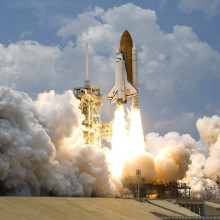
13:16 - Liftoff: How to launch a rocket
Liftoff: How to launch a rocket
with Hugh Hunt, University of Cambridge
The distance from Earth is not always the same – it varies because the lunar orbit is not circular, but elliptical. At its closest, it’s about 356 000 km away, and at its farthest: 407 000 km. But, either way, travelling to this rocky destination really is rocket science, as Izzie Clarke learned from Hugh Hunt from the University of Cambridge.
Hugh - We're here in the Engineering Department of Cambridge University which is where I work. And it's the fiftieth anniversary of the launch of the Saturn V rocket that took the Apollo 11 spacecraft up to the moon. Now that launch is going to happen - 50 years ago - in about three hours’ time.
Izzie - So it is… we are recording this on the 16th of July, so exactly 50 years ago. So tell us about the rocket. What type of rocket did the crew go up in?
Hugh - Well the rocket itself was the Saturn V, a huge great big tank of fuel. The fuel was basically kerosene; more or less the same, a bit like petrol, bit like diesel fuel, nothing particularly special but with liquid oxygen. And to this day the rockets SpaceX are using are exactly that, they have kerosene and liquid oxygen. It turns out to be a really efficient fuel. A million gallons, 4 million litres of this fuel; boy, it was like, that’s an explosion waiting to happen. That takes the rocket up to the upper edges of the atmosphere, at which point that stage falls off and falls to the ground. There's a couple more stages left which are hydrogen- and oxygen-fuelled stages. It's important to have different stages because you don't want to carry the weight of your fuel tanks all the way to the moon. And they did this 50 years ago! These engineers were just fantastic.
Izzie - And why is oxygen so important in this launch?
Hugh - If you burn a fuel in air, air is 80% nitrogen, and nitrogen is like a waste of... it's just added weight. If you really want to get fast, energetic combustion you need to have pure oxygen. Pure oxygen is what's needed for the fastest, rocket-type combustion. Now aircraft use air, they don't carry pure oxygen with them, and that's why aircraft just don't quite go so fast. So rocket-propelled machines - it's all because of the oxygen.
Izzie - And so what's going on in our rocket to make sure we get to whatever our destination might be?
Hugh - So the rocket is employing Newton's Third Law, which is that every action has an equal and opposite reaction.
Izzie - It's a bit like when a rifle is fired. The bullet rockets out of one end and the gun kicks back into your shoulder, just using the expanding gases caused by an explosion. Just not quite on the scale of a rocket.
Hugh - Now a rocket is throwing out the exhaust from burning the kerosene and the oxygen at a really high speed. The faster you propel this stuff out the more thrust you'll get. Lots of fuel going at high speed propels you up.
Izzie - Because I think a common misconception is that when a rocket goes up it's literally pushing against the ground.
Hugh - A rocket when it goes up doesn't push against the ground. Even in outer space you get thrust. When they were orbiting around the moon they were able to eject thrust with little rockets to accelerate the lander, and all sorts of things to manoeuvre the spacecraft.
Izzie - Enough theory. Time to launch some rockets. But we needed a crew for this and thankfully… we had some help from St Paul's Primary School in Cambridge. So what's the mission plan? We set up our own little launch pad in the courtyard. We placed our long thin pointed tube rocket, made from cardboard, on the pad; sitting it on top of a thin cylinder of some compressed air, just waiting to be shot skyward. A trusty bike pump would compress the air down and hold it in a chamber. All that was left to do was push an exciting-looking red button to unleash the air and launch the rocket.
Schoolchildren - Five! Four! Three! Two! One! Whoa!
Izzie - Alright! It's coming back down, it’s coming back down.
Hugh - Wow! That was high.
Izzie - That was really high!
Hugh - That was really high! That was twice the height of the building!
Izzie - Safe to say it went well. But what makes a rocket a good rocket, like our one?
Hugh - A good rocket has to have a propellant which is ejected at the highest possible speed, and it's got to be quite heavy as well. But it's a tradeoff. You don't want to carry really, really heavy stuff with you. So it's the mass flow rate times the speed that gives you the biggest thrust.
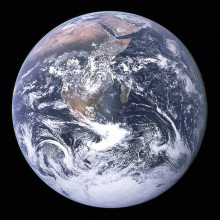
19:17 - The journey: Navigating to the moon
The journey: Navigating to the moon
with Norman Sears, MIT Instrumentation Lab & DRAPER
The Apollo 11 launch was just the beginning of the journey that would rewrite the history books. Taking around 4 days to reach their destination. Except for 48 minutes every lunar orbit when Mike Collins was on the far side of the Moon, the Apollo 11 crew were in constant contact with mission control. The team kept in touch using radio waves, which travel at the speed of light. Even with that, there was still over a second’s delay as the light made the 350,000km trip to the Moon. Unfortunately, we can’t travel at the speed of light so when it comes to the journey itself how do you devise a route for A Trip that’s never been completed? Luckily, Izzie Clarke spoke to Norm Sears, who had a pretty good idea…
Norman - I'm Norman Sears. I was a former member of the instrumentation laboratory at MIT and I was fortunate enough to be involved in the Apollo program, which is very significant nationally and internationally even.
I started out early in the program on the lunar phases of the mission that would be the powered landing, the ascent from the lunar surface and the rendezvous back with the command module. Those were fairly key phases of the mission. Eventually, as time went on, I evolved into covering most of all of the mission phases and the systems required during those mission phases.
Izzie - Norm was the technical director for the primary guidance navigation and control system - the crucial equipment in place to get the spacecraft to its all important destination.
Norman - That was determined before I even started. You had to pick a landing area that you were interested in going to. You then had to time the mission so that as you approached that landing site, the sun was at the back - behind you - casting shadows out to the front and that determined when you would have to launch and had arrived at those different points.
Izzie - And I guess absolutely crucial information for the team like yourself behind the navigation system.
Norman - That's correct. The navigation system was one of the three functions. The navigation is telling you where you are and where you're gonna be in the future. If you want to go somewhere else, you have to change that orbit and the way you do it is change the velocity both in direction and size to go somewhere else. That's called guidance. Then the control part of it is actually executing what the guidance has told you is required to do. That involves orienting the vehicle, turning the engines on or off to get the right change in velocity to take to a new position. Those are your three functions of navigation, guidance and control.
Izzie - And those features relied on three essential inputs. First up there was the inertial platform, which used gyroscopes to measure and maintain the orientation of the craft and accelerometers to measure the acceleration. Then there was the optical alignment. This system allowed the astronauts to sight stars and landmarks simultaneously, which helped the Apollo navigator to determine the position and speed of the spacecraft. And then there was a computer that had to solve the guidance navigation and control functions with accuracy and quickly.
Norman - NASA at that time - to meet the goal President Kennedy set out to land on the moon and return by 1970 was very demanding and NASA - did not want to do any new development that they didn't actually have to do. In our particular case, of those three units: the inertial units, the optical units that aligned them... those technologies were fairly well known and no new development had to be made. The computer, however, was a brand new situation. It had to be capable of solving pretty complex space navigation problems for the guidance navigation control functions and they had to do it in real time.
At that time that was pressing that technology. Up to then, analogue computers had done most of that type of work, only they didn't have anywhere near the accuracy that would be required for the lunar mission. So for the laboratory itself - the new technology that had to be pursued and developed - was the digital flight computer. And that was our high risk item and most of our new development effort went into that system.
Izzie - With a lot of testing and training after its development to make sure this took the crew to the moon. But, four days after launch - on the 20th of July 1969 - Aldrin Armstrong and Collins found themselves entering the moon's orbit and it was time for the team to split.
Norman - The command module and the lunar module were attached from Earth orbit to lunar orbit. Once they were in lunar orbit, two of the crew members transferred to the lunar module and they were then separated during preparation to descend to the moon for landing.
Izzie -Those two being Buzz Aldrin and Neil Armstrong leaving Michael Collins behind in the command module Columbia. With his two colleagues gone and radio contact with the abruptly cutting off at the instant he disappeared behind the moon. He became the most remote human in our solar system. Armstrong and Aldrin, however, continued on their descent to the moon in the lunar module, otherwise known as Eagle. And, whilst we know how the story ends, landing didn't quite go to plan.
Norman - The landing itself went fairly straightforward as it had been planned. The part that was unexpected is the computer alarms that occurred during the powered landing maneuver.
AUDIO from Apollo 11.
Norman - In the terms of Apollo though, the lavatory was the key operating support. In the sense that we had to be available during any mission phase. If something went wrong, people who had made the designs and developed them were available for a consultation if they were required. That turned out to be very crucial on the Apollo 11 because we did have that happen in an unexpected event during the power landing where we had five computer alarms sounded during the landing.
In the lunar module and command module, I believe, the astronauts had a switch or button. A computer checked that at every computer cycle. If they detected it, at any point, that program they were in would immediately stop and a new program would come up to take them back to the command module.
The computer alarms that happened - it turned out - was that rendezvous radar was turned on. The computer - even though that radar was not used for any real function - the computer tried to read it didn't have enough time to read it and that's what triggered the alarms. Fortunately, we had enough people in the right places to determine those were not crucial to the operation. They were really periphery items that the computer couldn't handle and gave the decision to keep going which was the right decision.
AUDIO from Apollo 11.
Norman - There was endless amounts of training missions through the simulators and in a sense they were sort of repetitive. You’d hear the same things over and over, you’d look at the same downlink data to see if you were in the various limits and all. I was in the Mission Control Center during the landing and listening to some of this going on though the various flight controllers and that was what I had heard many many times before. However there’s something I'd never heard on any other simulation training session and that was very close to the ground when Buzz Aldrin mentioned the words “picking up dust”. I'd never heard that before.
AUDIO from Apollo 11.
Norman - At that point it dawned on you this was no training exercise and you were just talking about a few seconds left.
AUDIO from Apollo 11.
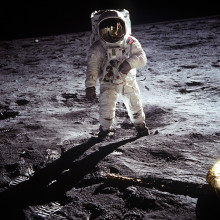
29:11 - Landing: One giant leap for mankind
Landing: One giant leap for mankind
with Amy Shira Teitel, Spaceflight Historian
We’ve just heard about how the Apollo 11 crew; Michael Collins, Buzz Aldrin and Neil Armstong, navigated their way towards the moon. After an intensive hunt for a landing site, NASA eventually chose a site called the Sea of Tranquility. One of the darker patches you see when you look up at the Moon, with the lunar module touching down on the evening of July 20th 1969. And just a few hours later, in the early morning of the 21st of July, Neil Armstrong made his way out of the lunar module, towards the moon’s surface. It was nineteen minutes later that Buzz Aldrin joined Neil Armstrong, adding his footprints on the moon’s dusty surface as the second person to set foot there. But once the crew had touched down, once the Eagle had landed, what did they actually do? Adam Murphy heard more from spaceflight historian Amy Teitel...
Amy - The first thing the crew did was go through the stay/no stay. So NASA had to double check that all of the systems on board, all of the consumables, everything was fine to support the lunar stay. The crew was actually supposed to have a rest period first because NASA wanted them, you know, bright eyed bushy tailed walking on the moon for the first time. The crew was so excited that NASA opted for the alternate mission plan of moving up the spacewalk to the first thing after the landing. Now that first thing was seven hours later - it took seven hours to prepare the lunar module for them to actually go outside. At which point they did take their first steps on the moon and were outside for about two and a half hours before returning to the lunar module, taking a quick nap and going back up to meet Mike Collins in the command module.
Adam - How concerned were they with advancing science on Apollo 11?
Amy - Science was not the key concern on Apollo 11. Apollo 11 was the mission to land.. that was its goal - was just to get there, to do the landing, to grab some stuff and to come home. You know, to that end there was Neil Armstrong's first task. So he got out of the lunar module first, as we know, he said the famous first words on the moon. His first job while Buzz was getting ready to follow him out was to actually pick up a contingency sample and this was just from any area near him on the surface. Just pick something up, stick it in your leg pocket. That was in case anything went wrong and the crew had to jump into the lunar module and leave on a dime.
Adam - It was a case of grab something - anything - just so you'd have something if everything went sideways. But what was the third man - Michael Collins: the loneliest man in the solar system - up to while Aldrin and Armstrong were bouncing around on the moon?
Amy - Mike Collins had the - depending on your perspective - the enviable or very unenviable job of waiting in lunar orbit for his moonwalking crewmates to come back. So his job was really to make sure that everything onboard the command module was running perfectly. That was in case, you know, if anything happened on the moon and Neil Armstrong and Buzz Aldrin couldn't get back up, Mike Collins was coming home alone, so he had to make sure that at every point he was ready to do that trans Earth injection burn. So fire the engine to leave lunar orbit and go back to the Earth, but also make sure that everything was working perfectly so that when his crewmates came back they could leave whenever they had to - if they had to leave before the mission was scheduled to actually have them leave lunar orbit.
The other thing he was doing was taking a lot of photographs and running some experiments from orbit. Now this is where - like I said - NASA didn't have the best detailed image of the landing sites for Apollo 11. It had data, of course, but the later missions, all of the orbital missions took really detailed pictures of specific surface areas from orbit so that NASA could make very deliberate decisions of “OK, well this is a geologically interesting area that we have to land in so let's put this mission here” or “this structure looks very neat”. You know it was really kind of gathering more data so that the later missions could return even more interesting science.
Adam - Although they were walking on the moon's surface for just a couple of hours, they were on the moon for a little over 21 hours. At the end of that they left behind a few trinkets, including a gold olive branch to symbolise peace and an Apollo 1 mission patch to commemorate the three men who died in an accident on the runway during Apollo 1. But, once they were done how did Armstrong and Aldrin meet up with Collins again after mankind's great leap?
Amy - Getting the crew back together after moonwalk was not the easiest part of the mission. It involved - what is technically called - a rendezvous and docking, which is basically just having the two spacecraft meet up in orbit and then physically connect and do a dock so that you can take out the probe and drogue apparatus that would connect the two spacecraft. You move that out, you have a tunnel and you can move between them. So that's what was needed to have the astronauts move back from the lunar module into the command module.
Now that's a little bit easier said than done. Thankfully orbital mechanics and physics mean that once you're in orbit you're pretty steadily in orbit and you can just adjust your orbit so that you come up and meet at the exact point. The problem was that the lunar orbital environment is not the same as the Earth. So practicing on Earth - in Earth orbit rather - isn't the same as doing it on the moon and the moon's gravity is also not uniform. The moon has these things called mass concentrations or mascons, which means that the gravity is a little bit wonky depending on where you are in orbit.
It all came down to having the most detailed understanding of the lunar orbital environment - how a rendezvous has to work with one spacecraft catching up to the other by just adjusting its orbit and having the brilliant software engineers write it all into the computer so that it basically took care of itself.
Adam - Brilliant software engineers just like Norm Sears who Izzie spoke to earlier. But looking back with 50 years hindsight how risky was the whole endeavor.
Amy - Well the thing with Space is that everything is trying to kill you. So dangerous would be the keyword. You know when think about the reality of what they're doing. We now almost see flying in space as routine but you're sitting on top of a giant rocket that is effectively a controlled explosion, punting you into space which then has multiple pieces that have to be put together. That has to punt you to the moon and then you're dealing with this foreign alien environment, landing on the surface that no one had done before. And it's not like crossing the oceans to the Americas with Christopher Columbus. You can't breathe on the moon or until the land. It's also trying to kill you. Everything about it - if anything goes wrong the chances were bad. But NASA did have this rule of three nines - everything had to be ninety nine point nine percent reliable. Now that obviously doesn't rule out every problem. Apollo 13 - it notably had some issues onboard with a ruptured oxygen tank but NASA and its contractors and subcontractors who built all of the spacecrafts, who worked on all of the software worked tirelessly to make sure that it had the highest rate of success possible. So given that everything on a mission to the moon was trying to kill them, it was also way safer than their previous jobs as test pilots which is the weirdest thing about it.
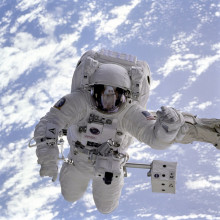
37:03 - The risky return of Apollo 11
The risky return of Apollo 11
with Katie Mack, North Carolina State University
On the 24th of July the crew splashed back down into the Pacific Ocean. They were picked up by the USS Hornet, and quickly moved to spend 21 days in quarantine. Just incase there were any nasty things on the Moon. But things could have gone drastically wrong, as Adam Murphy found out when he spoke to physicist Katie Mack, from North Carolina State University, about the return of the Apollo crew, and her family connection to it...
Katie - So my grandfather - his name was Captain Willard Samuel Houston, he went by Sam Houston - was involved in the Apollo missions. He was a meteorologist with the Navy when Apollo 11 was happening, and his job was to make sure that the splashdown site when the capsule came back to Earth would be okay, the weather would be fine and everything. And there was this amazing story about how he was able to redirect the capsule to a different site, because when he went to check the weather at the initial site all of the civilian weather monitoring looked fine, but he had access to some secret Navy spy satellites that he was using to study the weather.
He went around and checked on these spy satellites and found that there was this huge storm that wasn't showing up on the other kinds of monitoring systems. And so he had to go to NASA and tell them... they were a civilian organization, and he had to tell them, “you can't land where you think you're going to land, and I can't tell you why. And so you have to move the capsule, and I can't tell you anything more than that.” NASA luckily trusted him to the extent that they did agree to move the capsule, but they also said they were going to send a plane to the original site, and if there wasn't a storm there his career was over. And so they moved the capsule, everybody came down fine, it was a perfect end of mission; and they sent a plane to the original site, and there was a storm that was bad enough that it would have ripped the parachutes right off the capsule. So can you imagine if Apollo 11, they went, they walked on the moon, they came back, and if they came into a storm that would have been it, that would have been the end.
The Apollo missions are amazing because there are so many stories like that, where some little thing could have gone wrong and would have been a disaster. And there are so many things that had to go right. And of course in some of the missions things did go wrong, and they had to make corrections at the last minute, and in a lot of the testing there were a lot of disasters and problems. But it's still amazing to me how much was achieved, and how well it did go considering all of the little pieces that had to be in place and all of the places where they were this close to disaster.
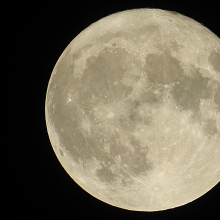
40:58 - Mythbusting the conspiracy theories
Mythbusting the conspiracy theories
with Ken Skeldon, Wellcome Genome Campus
When people come to you with questions about whether or not the Moon landings happened, how do you tackle the topic? What’s the best way to show them that we did in fact land on the Moon. Adam Murphy spoke to Ken Skeldon from the Wellcome Genome Campus in Cambridge who once took part in such an endeavour, teaching school kids about lunar science, using the simplest of tools...
Ken - So at that time it was quite widespread. I mean there was a survey that put the number of Americans that believed these conspiracy theories at one in five at one point. As a scientific community we felt there was a bit of responsibility to try and bring some rationale to the discussions that were going on and that's what really provoked our activities in that field to try and just bring some quite basic science that people could do at home to try and explain away some of the conspiracy theories.
Adam - And what kind of science did you show them?
Ken - So it depended on what particular element of the conspiracy theories people were talking about. Some people will draw attention to the non parallel shadows on the lunar surface. The argument there being that there must have been a nearby light source. In other words they were in a studio set. But in actual fact, you know, if you take a photograph out your living room window of two lamp posts with the sun casting shadows, you will find that you get non parallel shadows. So that is just a very simple consequence of a three dimensional scene being projected onto two dimensional photograph. So there's actually nothing in that, but when it's presented as part of a series of so-called “anomalies” then it becomes quite a convincing argument for people to in essence be taken in by.
When you look at the photographs of the astronauts on the moon's surface, you tend to think of it as night because it's a black sky, but actually it was a lunar morning with a sun there and you can see is obviously a sun there because you get very very sharp shadows. And that sun illuminating the lunar surface makes a very powerful light source that is coming from the lunar surface itself. And that means that it's almost impossible for an astronaut not to be lit. So they’re lit very brightly from the sun directly but they're also lit from the lunar surface itself. And when people thought about that, you think “oh okay, so I can see maybe why we can see detail in astronaut’s suits even when apparently they're standing with their back to the sun”, that kind of thing. These kinds of experiments that you could play out yourselves with torches and pieces of paper and miniature model astronauts went down well with what school audiences but also with public audiences that they could try out these things and maybe think about it in a different way.
Adam - What are the simplest proofs that we did in fact go to the moon?
Ken - There's a few things I mean there were retro reflectors left there so that people could do laser ranging experiments and ever since the moon landings we've been measuring very accurately distance between the earth and the moon using these retro reflectors. The astronauts brought back 400 kilograms of moon rocks and they've been analyzed by scientists all over the world. But there's also very simple things you can do I mean we did a little experiment with the footage itself and we essentially tagged the astronauts as they were jumping up and down on the lunar surface. And you know the frame rate of the film and you can actually work out what the gravity is in the environment that they we're in. And the answer came out to be exactly a sixth of the earth's gravity which is what the lunar gravity is.
Adam - When you try to convince people of this, what kind of things do you have to keep in mind to not push them further away?
Ken - The danger is that you're kind of responding to the hoax conspiracy theories in a defensive way. And that was never the intention, it was simply to present some alternative explanations and then let people make up their own minds. So when we did the talk - and we toured around the world with this - we would always start the conversation by saying “well how many people believe that the conspiracy theories, there might be something in them?” And I would do the same thing at the end. And in some cases you would get less hands going up and in some situations you might get more hands going up, but we felt that at least we'd had the ability to present some science and let people make a more informed decision.
For example, something very simple that a Glasgow sports scientist pointed out, if you look at Neil Armstrong's knees when he lands on the lunar surface for the first time, they don't bend. And in actual fact if you were faking this and you were doing it say on Earth and then slowing down the footage, that would be a very easy mistake to make. That you would get bending knees. So there are interesting things that we picked up along the way that other people had spotted as well.
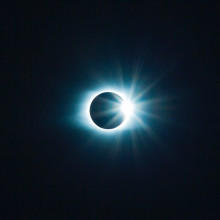
46:05 - The mission to return to the moon
The mission to return to the moon
with James Carpenter, European Space Agency
Ever since Apollo 11, 12 men in total have walked on the moon with return missions running until 1972. Now, both national and private agencies want to return to the moon but it’ll rely on collaborations across the world. So when are we going back? And will it involve humans or should we leave the work to robots? Izzie spoke with James Carpenter who works on human and robotic exploration at the European Space Agency…
James - So the International Space Station has shown us what is possible when the nations of the world unite and come together, to achieve incredible and impossible things. And I think that the moon is the next place where we can do that. Where we, as a species, can go and learn what it means to go beyond Earth and learn lessons that we can apply here on Earth, to improve the situation here.
Izzie - How are people planning to return to the moon?
James - The United States, through NASA is preparing something called Orion. Orion is a spacecraft which will carry humans beyond low Earth orbit, where the space station is - where we operate today, and out into deep space for the first time since Apollo. And the European Space Agency (ESA) is very much involved in this program. We are providing something called the European service module which is at the back of the crewed part of that vehicle, and it carries things like the propulsion systems, the power systems and some life support systems. And so that vehicle will go to something called the gateway. The gateway is a crew-tended platform, kind of a space station cum spaceship or space port, which sits in deep space, in the vicinity of the moon. And it's from here that humans will go down to the lunar surface and return from the lunar surface for the first time. And this is something which is being explored by a group of countries through the International Space Station partnership to work together to achieve this and we're looking at our different roles in this scenario now.
Izzie - And so will it act as a base station for people to, you know, pop off and grab some supplies and go elsewhere?
James - The gateway’s first function as a staging point will be to access the lunar surface and come back from the lunar surface. But the great advantage of the gateway's location, is that it's nice and high in the gravity well. So, unlike from Earth where we need a lot of energy to get away from the gravitational pull of the earth, once you’re at the gateway it becomes a staging point from which we could go on to other places in the solar system. So one could envisage a future where we have vehicles being assembled around the gateway, using materials brought from Earth, and maybe even the moon - perhaps filled with propellants that have been created at the lunar surface using ice and other things found at the poles of the moon - and then going on from there to Mars. So the gateway becomes a really important element in potential future architectures for the moon, but also to more distant destinations. Exactly what that will look like, I think we can work out once we've nailed the lunar return. In the US now, there is a very strong drive to return humans to the lunar surface by 2024. And we will be looking to understand how ESA can play a role in an international lunar exploration scenario which is sustainable and has a really a long term plan.
Izzie - Is there a place for humans in that, or are we just leaving it to robotics because we don't have that risk of - you know things going wrong with us, we are human?
James - So space robotics have come on a long way. And there are tremendous things that we can do with robots. Robots however cannot substitute entirely for humans. So if we look at the science that was performed at the lunar surface 50 years ago on Apollo - what was possible in just a few days with two humans at the lunar surface, is way beyond what would be possible with any robot available today, in a much much longer time. There is no substitute for having a well-trained human in situ at the surface of the moon, or any other planet, doing science. That said, there is a role for both humans and robots. So there are some things that humans are really good at, and robots are really bad at. And there are some things that robots are really good at that you don't need humans to do. And so the challenge for us, and the exciting thing I think for everybody, is to try and find that balance between what humans can do best and what robots can do best. And trying to get the best of both worlds and to create a real partnership between human and robotic capabilities.
Izzie - It might be early days but do we know what those humans might be doing when they do return to the lunar surface?
James - Definitely. So we know a lot about the moon but there is a huge number of science questions to be addressed. I think the future of the moon is likely to look somewhat like Antarctica today. So humans now go to Antarctica to form scientific research, make measurements, travel across the surface of the earth and Antarctica taking samples. And I think something like this will be what we see at the lunar surface too. They'll also be preparing for future exploration, so testing technologies and preparing the way in that sense too. One very important theme of Lunar exploration in the coming decade or two, is going to be establishing the use of local resources for space. So, one thing's become apparent is, if we want to explore the solar system in a permanent and sustainable way then we need to learn how to use the resources that we find, where we find them. And the moon is the place where we will learn for the first time how to use resources that are available in space to meet our needs. So one example of that could be the ice at the poles of the moon. So if we can learn how to purify it, and then to use it both for life support systems - drinking water and air - but also to split it into oxygen and hydrogen, which could become propellant, then this is a capability that will be enabling for us, moving out into the solar system. And it can also make accessing and using the moon sustainable in the long term. But we also need to do this in a way which is in itself sustainable. So through learning how to do this, we can, we are always pushed to the maximum efficiency and minimum waste that is the nature of the way we engineer for space. And so in doing so we can also learn some really important lessons about resource management here on Earth and how we can manage our own resources in a more responsible and sustainable way.
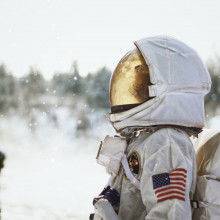
53:11 - Remembering the mission to the moon
Remembering the mission to the moon
We asked for people to tell us their own feelings about the Moon landing, and their own memories. This is what we heard...
I remember thinking it was very unreal, that it really wasn't happening that it was like film.
The whole family was excited it was an amazing thing.
I remember it was roughly the same night that the Stones went number one with Honky Tonk Women and being a Stones fan that was just as important as the moon landing! But I did run up and down between TV in the living room and radio on my own room to follow both events.
When I was on tour in Ireland with Yes. And we played a gig in Cork. We went down to the pub around the corner and it was the night of the moon landing. So we thought “hey what a wonderful time to be alive. You know we're landing on the moon.”
The Apollo missions to me personally are so inspiring and insane but in the best ways. Reading about them as a kid was what inspired me and got me excited about science and spaceflight in the first place. So to me they are this endless source of fascination, you know I've been studying this the bulk of my life and I'm still finding new things that make me say “are you serious? This is what happened?
I think if we do go back we should go back in the right spirit with the right reasons and I think it would be cool to set up some kind of little moon base there. I think it would be fun to go to Mars. You know I like the idea of humans going out and you know walking around on different bodies in the solar system.
I remember going outside looking at the full moon and it seemed that it was different in some way. Somehow a lot closer to the earth.










Comments
Add a comment